Book review: Return to Genesis
by Martin Pierce
★★★★
Wow, this book is HUGE! Pierce is opinionated and has lots to say, so there is no way a short Dubious Disciple review could touch on every topic he covers. It was a roller coaster ride; oddly, I usually either strongly agreed or strongly disagreed with each topic. Yet the writing was too captivating to merely skim.
Well, with one exception. Be forewarned about a chapter titled The False Israel in which Pierce attempts to knock Jews off their high horse. He complains about how much financial, political and media influence Jews have, and pooh-pooh’s their belief about being the chosen race (while he simultaneously promotes only Christians as God’s children.) This chapter just drones on and on and on, describing the evils of Judaism, and may be skipped.
The book’s subtitle is What Ancient Poetry Reveals About Christ, the Church, and the Kingdom. It officially reaches the stated topic in part five (there are six parts in all). While the reading before this section is interesting, I think Pierce errs in thinking his readers need that much preparation (indoctrination?) before getting to the good stuff. But now that we’re there, take a gander at these two verses:
Genesis 1:1, the beginning of the first creation story: In the beginning God created the heaven and the earth.
Genesis 2:4, the beginning of the second creation story: … in the day that the LORD God made the earth and the heavens.
Did you notice the difference? One tells the story looking down from heaven; the other, looking up from the earth. When heaven comes first, it results in the Sabbath rest. However, when the earth comes first, it results in the Fall. These two stories, insists Pierce, are intentionally complementary; they could not be by two different authors, as proponents of the Documentary Hypothesis claim. For proof, Pierce lays out each story’s structure and shows us how the pieces fit together: Genesis 2:4-2:25 is a reworking of 1:1-2:3, with a different emphasis, so that we can understand the same set of events symbolically. One from the viewpoint of heaven, and one from earth. This is a quite fascinating observation, and Pierce’s research is worth studying. But will digging into the symbolism really help us understand the Bible in a more meaningful manner?
I think so. For an example, try picturing Eden, a little garden in the midst of a world of pain (Adam and Eve were hardly alone in the world), with a river flowing out of it. Revelation describes this river as flowing out from the throne of God. The river divides into four smaller rivers; “four” symbolizes completeness, as the pure water of Eden flows out to the four corners of the earth. Does this describe the Kingdom of Heaven that you have in mind, as you picture God’s will for this world? (Think spiritually, not in a natural sense.)
Martin Pierce is a relatively conservative Christian—for example, he adheres to traditional authorship of the New Testament, but thinks it’s silliness to believe in young-earth creationism against overwhelming evidence—yet he is not very enamored of the current trend of Biblical literalism. This is not to say that Pierce doesn’t take the Bible seriously or that his interpretation is extreme. In my opinion, it’s not. He simply believes the Bible’s real purpose is in its theology, not its history. He subscribes to partial preterism (meaning that most, but not all, of the bible’s prophecies such as the Day of the Lord came to pass as expected in the first century) and post-millennialism (meaning, in this case, that Jesus will come back yet a third time).
More than anything else, this perspective means Christians who live with their head tilted skyward waiting for the return of Christ should instead lower their gaze to a world that needs their attention. It only takes a small number of Christians to make a difference, but they must be faithful. The parable of the ten virgins helps explain how we should view the earth. The five foolish virgins weren’t condemned for not being ready—indeed, they WERE ready at precisely the right time—but they were condemned for being unprepared for an unexpected delay in the coming of the bridegroom. Likewise, we should never approach life as if we’ll only be around for a few more years, as this only encourages improper stewardship of the earth.
So is this the “right” way to read Genesis? Did its author(s) intend for us to recognize the various chiasms and parallelisms in its text? Do symbolism, metaphor and typology play as large a role as Pierce describes? Heck if I know, but I do know I enjoyed the study. It’s a fascinating and meaningful way to make sense of a book that many may otherwise find full of only antiquated myth.
Pierce’s book is a call to return to the state of purity and blessedness that existed in the garden of Eden. That requires unity, but the Eden Pierce imagines is Christian unity, not worldwide unity. And for this, he has a plan. A governing council of perhaps seventy elders would represent and unify the various denominations, while keeping a strict watch for heresy. Each would be in agreement with at least the Nicene Creed and the Apostles’ Creed, and no dispensationalists or literalists (such as young-earth creationists) would be allowed to hold a position on the council. The represented denominations would be governed so that sinful practices such as homosexuality would never be tolerated. A Christian court would be established, as this world needs Christian representation in such issues as divorce and child custody. Yeah, you can guess it ended on a “strongly disagree” note for me … but I still recommend the book as insightful and interesting.

Book review: John’s Gospel: The Way It Happened
by Lee Harmon
★★★★★
My thanks to Susan Peck and My Cozie Corner for this five-star review of my latest book:
*********
Lee pens “John’s Gospel: The Way it Happened” in a story line that interweaves fact and fiction which is easy to understand, and I found quite enjoyable to read. It’s a fascinating way to take a look at the Gospel of John as it teaches you along the way. My only regret is that I wished I had read Lee’s first book “Revelation: The Way it Happened” as I had the feeling I was missing some key points on the characters. As my son had said “If the whole Bible read this way, it probably would make a bit more sense and more fun to read” (yes he has read the Bible from cover to cover). A must read for all Christians and who are open to another person’s take on the Bible.
I give “John’s Gospel: The Way It Happened” a 5 star rating.
*********
For more, go here http://coziecorner.blogspot.com/2013/06/book-review-johns-gospel-way-it.html

Book review: Jesus is the Christ
by Michael F. Bird
★★★★★
So when did Jesus’ followers begin to proclaim him the Messiah? Michael Bird argues that Jesus deliberately acted out a messianic role, and that his followers would hardly have proclaimed Jesus to be the Messiah against Jesus’ own self-understanding. I needed no convincing on this topic, but if I did, the introduction to Bird’s book alone provides evidence enough. Indeed, I found the long introduction to be the most thought-provoking part of the book!
After the introduction the book settles down to a methodical look at each of the four gospels and their unique contribution in portraying Jesus as the Judaic Messiah. I found Bird’s examination of the gospels less bold, but no less interesting and informative. The question to be answered seems to shift from When did Jesus become known as Messiah? to How clearly is Jesus portrayed as Messiah? Bird describes the gospels as “stained-glass windows offering different shapes and colors about a figure they all regard in their own unique way as the long-promised Messiah.” He reads them this way:
Mark: The Crucified Messiah
Matthew: The Davidic Messiah
Luke/Acts: The Prophetic Messiah
John: The Elusive Messiah
The three main titles that Bird examines are Son of Man, Son of God, and Son of David. Each, he argues, is a messianic expression. The Gospel Christology thus is a form of messianism and must be understood in that light.
Bird’s writing is scholarly, precise, and well-argued, with lots of references and endnotes. I’ll definitely be picking up more books from this author.

Book review: The Literary Guide to the Bible
Edited by Robert Alter and Frank Kermode
★★★★
I’ve had this book for quite a while, but used it only as an occasional reference. I finally decided to read it all the way through, and I’m glad I did, though it definitely took a while. Perhaps two dozen authors provide coverage of nearly every book of the Bible, plus a collection of general essays thrown in at the end for good measure.
This collection isn’t meant as a ministerial aid. It’s a book-by-book journey into the richness of the Bible’s presentation. The Old Testament coverage focuses heavily on the poetic structure and literary qualities of the writing. As a result, books you may consider dry—like Isaiah—become stunning in their literary beauty, while other books that contain fascinating stories and theological depth—like Genesis—can appear ugly and boring by comparison.
While the Old Testament focuses more intently on literary style and presentation, the tone shifts when the topic moves from the Hebrew Old Testament to the Greek New Testament. Here, the emphasis is more on historical-critical exegesis, and what the New Testament writers were trying to tell us about the Christian movement in their own day. While Christian writings do build heavily on an Old Testament foundation, they derive not from the poetic Hebrew but from the ghetto-Greek of the Septuagint. Thus, cadence gives way to content, but the coverage is no less interesting.
I toyed with the idea of doing two book reviews: one for the Hebrew Bible and one for the Christian writings. They are that different. My favorite topics, for four entirely different reasons, were:
- Isaiah, by Luis Alsonso Schokel, which is a exquisite collection of poetry by three or more authors.
- Jonah, by James S. Ackerman, is exposed as a literary masterpiece.
- The Gospel of Mark, by John Drury, is an interesting portrayal of a human Jesus hardly devoid of emotion.
- The Pauline Epistles, by Michael Goulder, provides a glimpse into the mind of a fascinating and influential apostle.

Book review: The Passover Plot
by Hugh J. Schonfield
★★★★
As long as this influential book has been around, I’m just now getting around to reading it. The problem, for me, was the title; somehow, it just seemed hard for me to take it seriously.
It is, however, an interesting and thoughtful picture of the historical Jesus. Jesus is portrayed as a keen judge of human character, shrewdly manipulating both friend and foe with utmost precision to orchestrate his own death, because that was the messianic prophecy which most rang true to him.
The “plot,” however, is a bit bizarre. The way Schonfield puts the pieces together, Jesus never intended to die. Instead, he carefully timed his execution so that he would not be left long on the cross, and with the help of a bit of drugged wine vinegar lifted to him on the cross from a friend, he hoped to fake his death. He expected to revive in the tomb. Whether he actually did revive or not seems immaterial to the success of the plot, because this accomplice was asked to spread the word of his impending return, and the accomplice was then mistaken by others to be the risen Jesus himself! That alone left enough miracle resurrection stories hanging around that Christianity would emerge even if Jesus didn’t manage to reappear.
Part II of the book presents six essays describing the origin and growth of Christianity. I found the essay about Messianism to be particularly interesting, because of my interest in the apocalyptic Son of Man title, but the other five essays were also thought-provoking.
Though the scholarship is now a little dated (this was published in 1965), this is a five-star book. But I just couldn’t bring myself to award all five stars, because the Passover Plot theory itself (supposedly the focus of the book) is just too far-fetched for me to take seriously.

Book review: A Whole new World, The Gospel According to Revelation
by Greg Uttinger
★★★
This is a no-frills, straightforward introduction to the preterist interpretation of Revelation. Nothing new is presented. It’s a short little booklet you can read in a couple of hours.
Preterism is the belief that most closely fits my own historical-critical treatment of Revelation, so I’m on board with the author. If you’re looking for a scholarly-yet-respectful interpretation, you do need to be aware of the preterist way of reading the Apocalypse. I just didn’t find anything too captivating about this presentation. The basics of Uttinger’s book follow:
1. The radiant woman of Revelation is Israel, waiting for the arrival of the Messiah.
2. The beast of Revelation is Rome.
3. The “mark of the beast,” 666, points to Nero Caesar, who persecuted Christians in the first century.
4. First-century Jerusalem is the “Babylon” of Revelation, and was destroyed as Revelation predicts.
5. The New Jerusalem is a present reality … Revelation’s promise of a new age has already begun.
Recommended for those wanting a glimpse of preterism, but such an abbreviated treatment will prove unconvincing.

Book review: Quenched, What Everyone (Especially Christians) Should Know About Hell
by Crystal St. Marie Lewis
★★★★★
I’m very impressed. I follow Crystal’s blog online, though apparently not closely enough, or I would have known she had written this booklet. It’s a concise introduction to what the Bible really says about hell–and what it doesn’t say. It focuses on the Hebrew and Greek words “Hades,” “Gehenna,” “Tartarus,” and “Sheol.” Each of these words has a unique meaning and symbolism, each has a different metaphorical and poetic usage common to biblical times, but each is translated into the same English word: “hell.” This merging of different meanings led to a strange and frightening development of Christian doctrine regarding eternal damnation, as reformers compared one mistranslated word to another, compounding the confusing.
Certainly, this is not the first book I’ve read on the topic, but Crystal has a way of explaining things simply and gently, using few words. This won’t be the last word on the topic as we continue to learn about the idioms and figures of speech in the Bible, but I fully agree with Crystal’s claim: every Christian should know at least this much.
Note: I believe Crystal is giving away e-copies from her blog at http://crystalstmarielewis.com/what-the-hell/. Rush over there now!

Book review: The Fourth Gospel: Tales of a Jewish Mystic
by John Shelby Spong
★★★★★
Spong has never warmed to the historicity of the Fourth Gospel. In fact, he never warmed to that gospel much at all, until the last few years, when he decide to make a study of it. I’m glad he finally did; I thoroughly enjoyed reading Spong’s analysis.
He begins his book by admitting that the older he gets, the more he believes, but the fewer beliefs he holds. I quoted Spong in my own book about John’s Gospel (published just three months ago) as saying “I do not believe I can make a case for a single word attributed to Jesus in the Fourth Gospel to be a literal word actually spoken by the historic Jesus.” Knowing that we were researching our projects simultaneously, I contacted him to make sure he hadn’t developed a new “belief” about the Gospel before I printed that. Nope, he still doesn’t believe Jesus said any of the words in John’s Gospel, and more than that: Spong believes none of the miracle stories are real, few of the characters are historical people, and certainly the author wasn’t an original apostle of Jesus. Nicodemus, Nathanial, the woman at the well, the beloved disciple, the mother of Jesus (who remains unnamed in this Gospel)—all purely symbolic. The Gospel is a late-first-century mystical work, allegorically telling the history of the Johannine Community and the development of the Jesus movement, and it was never meant to be read like a history book.
I can’t go quite that far, yet it’s fascinating to read the Gospel as a mystical lesson book. The “mother of Jesus” in John’s Gospel, for example, was never a woman named Mary, but a symbol of Israel. The wedding of Cana was Jesus’ own wedding. Not literally, of course, but symbolically. The incarnation was never about a foreign visitor from heaven, but about a new and mystical way of experiencing life in abundance. I reach similar conclusions in my own book, but if this is the correct way to read John’s Gospel, then there remains one miracle Spong doesn’t explain: how did a book with so many contributing authors, going through so many stages, wind up coherently spiritual? Were none of these contributors literalists?
Yet Spong’s book just gets better as it goes along. I would venture a guess that he finds the most poignant moment in the Gospel of John to be at the foot of the cross, where the beloved disciple is joined to mother of Jesus. Spong’s parabolic understanding of the Gospel climaxes in symbolic meaning here, and I think it would be a spoiler to explain exactly what the moment describes.
Perhaps my favorite part of the book was Spong’s treatment of the final chapter in John. Written by an unknown author, it is often referred to as the appendix of the Gospel. So contrary is the “appendix” to the rest of the Gospel that I pretty much left it out of my own book. Spong, however, while recognizing that it doesn’t fit with the rest, still has a great appreciation for this story of Jesus appearing to the disciples in Galilee. He considers it probably founded on an earlier tradition than the rest of the gospel … indeed, possibly earlier than any of the gospels’ resurrection stories! Still treating even the appendix as a mystical writing, Spong brings this final chapter alive in a way that made me, for the first time, appreciate it.
Fascinating and fresh, this is John’s Gospel the way nobody has read it for 1900 years.

Book review: Two by Two, The Shape of a Shapeless Movement
by Irvine Grey
★★★★
Note: Grey’s description of the 2×2 movement is a bit negative, often quoting disgruntled ex-members, and he concludes that the 2x2s are a “dangerous cult.” This he means not in the scholarly nor in the pejorative meaning, but in its Christian meaning, such that it describes nonconformity with traditional Christian beliefs. He uses Bebbington’s quadrilateral as a measuring stick. I surely agree with this assessment of nonconformity, even as I find it unhelpful to use a term with such a derogatory connotation as the word “cult.” In the 40-some years I was in this movement before leaving it, I found the lifestyle to be encouraging and uplifting, certainly not “dangerous.” As a liberal Christian, I tend toward pluralism, so I feel no negativity about differences in belief, and indeed I am profoundly grateful for my upbringing in this wholesome atmosphere. Now on to the review…
It is a difficult thing to define the “shape of a shapeless movement.” The 2x2s are a small worldwide Christian spin-off, but they just aren’t the same the world over. For example, Grey writes about the 2×2 claim of an unbroken line back to Jesus, but in my neck of the woods, I’ve heard this claim from only one person. Rather, the usual claim is that God is able to revive periodically in history a look-alike movement operating exactly the way Jesus taught the apostles, and the recent 2×2 movement is one such revival. In another example, Grey finds that “attendance at all meetings by members is mandatory and failure to attend is closely monitored.” Failure to come [every Sunday and Wednesday evening] will invite a “little visit” by a worker (minister) and discipline if continued. That is hardly my experience. For a third example, Grey writes that workers refuse to participate in weddings, though one certainly officiated at my wedding! So, yes, it’s tough to nail down specifics on a shapeless movement, and Grey can be forgiven for trusting a few too many of the sweeping generalities of his sources.
Perhaps Grey’s sources come primarily from more strict areas—if so, it would hardly surprise me if these areas generated more disgruntled ex-members—but while the 2x2s have no published doctrine or creedal statement, Grey does dig down to the gist of the matter. The 2x2s are an exclusive, sectarian, closely-knit branch of non-Trinitarian believers, emphasizing a homeless, travelling ministry in same-sex pairs and church meetings in the home. They disdain ministerial education, traditional clergy and church buildings, instead leaning heavily on Matthew chapter ten for guidance.
Grey gives equal attention to the two primary founders of the 2×2 movement: William Irvine and Ed Cooney. The two joined forces around the turn of the 20th century, determined to return to the simple way of the first apostles. By 1905, the movement had grown to fifty-five full-time “workers” (ministers) travelling to spread the gospel to several other nations, including the United States.
Grey’s intention is to evaluate the 2×2 movement so as to determine “whether they are evangelically Christian, an exclusive sect, a New Religious Movement or a cult.” Grey concludes the latter, because the 2×2’s deny some cardinal doctrines of the Bible, while adding to others in such a way as to make them erroneous. A good example of this is the insistence upon a homeless ministry travelling in pairs. Yes, the early apostles often found it convenient to do exactly this, but it was hardly a staple of Christ’s teaching. With several of these doctrinal issues in mind, Grey believes the 2x2s thus qualify as a cult, using this standard: “A cult of Christianity is a group of people, which claiming to be Christian, embraces a particular doctrinal system taught by an individual leader, group of leaders, or organization, which denies one or more of the central doctrines of the Christian faith as taught in the sixty-six books of the Bible.”
There is one great frustration I share with Grey about the 2×2 lifestyle. Grey writes, “In their sermons the workers constantly point to Jesus as their example, yet they have little or no interaction or contact with those outside the movement.” He is right, and this contradicts the teaching of Jesus, who, in many written examples and as the book of Acts tells us explicitly, “went about doing good.” This inward focus of the 2x2s, sticking closely to members of their own brotherhood, only exacerbates the exclusivity of the sect.
This exclusivity also builds distrust in Christian theology, which results in less-than-scholarly preaching. Grey provides several partial sermons as evidence of dull, unstudied preaching—he’s hardly impressed after attending about fifty such gospel meetings. I share this preference with him of intellectually stimulating sermons, and found them to be rare, yet I believe most attendees are more appreciative of spiritual encouragement than theology, and that sort of guidance simply does not require institutional education. 2×2 ministers preach from the heart to the heart, not from the head to the head.
Yet, while I find religious exclusivism of any form to be unhealthy, I am unable to speak very negatively about my former belief system. Here is a different quote from the book that better describes my own experience: “The 2x2s demonstrate enough to let them pass as a quaint and primitive Christian movement wishing to emulate that of the New Testament believers, but at the same time reject the uniqueness of the Gospel of Jesus Christ as accepted by evangelical Christianity as historical, rational and empirical.”

Book review: Evil and the Justice of God
by N. T. Wright
★★★★
Wright tackles the age-old problem of evil (why does God allow evil to happen?), but with a little bit of a twist. Wright does not discuss natural evil, and there is little attempt to explain or justify personal evil. No wishy-washy explanations, such as the typical argument that God allows evil because it creates circumstances in which virtue can flourish. Rather, Wright focuses on what God is doing about evil. Remember: the prophets repeatedly promised a coming age when the world would be rid of evil. Can we even imagine such a world?
First, if you’re tempted to pronounce judgment on God for all the evils in the world, you’re too late; God has already served his sentence on the cross. But the gospels tell us more; they insist that Jesus overcame evil on the cross. That is some strange theology, no matter how you approach it. How does succumbing to evil prove victorious over it, and why doesn’t it feel like evil has been conquered?
The key to the whole topic is understanding the role of forgiveness. Both the forgiveness of God and our own forgiveness of others. The justice of God is not vengeance; it is granting us a measure of the forgiveness Jesus showed, so that the evil of others cannot hold us hostage. A perfect age is coming, but we cannot embrace it until we have outgrown our bitterness over what others have done to us, conquering evil in the same manner as Jesus.
Dang, that’s deep. I really was hoping we could just hunt evil down and kill it. Good book, by the way, though not as scholarly as I’ve come to expect from Wright.

Book review: Pastrix
by Nadia Bolz-Weber
★★★★★
Fantastic! So funny, so moving, with tears rolling either way. This is a raw version of Take This Bread (by Sara Miles), where the misfit lesbian atheist churchgoer is swapped out for an even funnier tattooed alcoholic-in-recovery who “swears like a truck driver” … and who this time went so far as to become a Lutheran pastor, founding her own church. When Nadia decided to become God’s bitch and embrace the whole “Jesus thing,” she changed … well, probably only her drinking. “Nothing about me says ‘Lutheran pastor,'” she admits, and I believe it. Pastoring just doesn’t come easy for her. “If something like liturgical dance or cheesy praise singing is happening on my stage and thousands of people can see me, I can manage my own body language and facial expressions for a half hour or so. But then, like when I’ve had to be nice to more than three people in a row, I need a nap.”
The book’s language may be offensive to delicate ears, but yes, this really is nonfiction. Nadia’s scathingly honest self-portrayal of her struggles, her focus, her successes and failures (and there seems to have been many of both) leave you wondering … is there really a place in the clergy for this kind of pastor?
One time Nadia’s Denver-based church organized a little Thanksgiving outreach program, where church members bagged up meals and took them around to share with those who had to work on the holiday. When they entered the adult bookstore on Colfax and handed the clerk a bag, he teared up: “Wait. Your church brought me Thanksgiving lunch … here?”
Yep, Nadia’s Christianity has its niche.

Book review: A Week in the Life of Corinth
by Ben Witherington III
★★★★★
Very informative. Witherington splices together historical fiction and scholarly commentary to produce an excellent teaching aid. The result is fiction that is too choppy and short for a captivating plot, but perfect for enjoyable learning.
The story takes place in the mid-first century, at the time Paul the Apostle was church planting. Paul plays a heavy role, but he’s not the main character. Instead, some obscure characters in the Bible are fleshed out and brought to life (maybe you remember Gallio, but I bet you’ve never heard of Erastos or Nicanor … and kudos if you have!) Erastos is running for public office in Corinth, Nicanor is his slave, and Paul, though he does not involve himself in politics, is his usual Christian self. The “scholarly commentary” I alluded to comes in the way of one- or two-page inserts titled “A Closer Look,” which are peppered throughout the text.
This book is not preachy, nor even very “Christian” until the final page or two. Instead, it’s just a great way to familiarize yourself with one of the major cities in the Bible, particularly during the time of Paul. Highly recommended!

Book review: God’s Secretaries: The Making of the King James Bible
by Adam Nicolson
★★★★★
Here’s an odd book. It suffers from a little deficiency, through no fault of its own: the story it has to tell (how the King James Bible came into being) is simply not very interesting. Most of the contributors to the King James Bible were obscure, and the historical setting is equally dull. It’s wrought with typical corruption of court, power squabbles, and serious disagreements over doctrine. What else is new throughout the 1500 years since the Bible’s books were written? Even telling the story against a backdrop of the plague and the genius of Shakespeare can’t rescue its setting.
How could our Bible emerge from such a world? But out of this stagnation, through the unlikely cooperation of divergent men, arose a masterpiece. A work meant to be chanted in church, with a rich cadence and a majestic language. Quaint even in its own time, the KJV is nevertheless the language of God, properly aged, in His antiquity and mystery.
Never mind its inaccuracies, and how we have since uncovered more original scriptures to translate. Never mind that the authors have added and subtracted to enhance the beauty of the prose. The ear is the governing organ; if it sounds right, it is right. The end result does indeed rival Shakespeare in its beauty, producing by far the most quotable literary creation in history.
Pity it’s necessary to slog through the first 150 pages of Nicolson’s book in order to appreciate the miracle of the King James Bible, but it is necessary, because that is the story. Each member of the team was to translate all the chapters in his allotted section, alone, without conferring with others. Only then were they to meet together, discuss the text and decide on their final submission. Somehow, inexplicably, it all came together, and the final chapters of Nicolson’s book are glorious. And Nicolson’s rating? A three-star story miraculously transformed into a five-star miracle.

Book review: Our Chosen Faith, An Introduction to Unitarian Universalism
by John A. Buehrens and F. Forrester Church
★★★★
I’ve enjoyed attending a Unitarian Universalist church about every other Sunday for a while, and thought I
should know a little more about it, so I picked up this book.
That’s a lie. I have no idea where the book came from, whether it was a gift or a request for review or a purchase I forgot I had made. It just appeared on my bookshelf, without getting logged in my review queue. I love mysteries, so I read it.
U.U. is a merger of two denominations—Universalists and Unitarians—and to be honest, I didn’t learn a lot from the book. That’s because there is no creed to learn, no rituals to perform, no insistence upon a single belief system, while at the same time it demeans none of them. It’s pluralism to the extreme. Fits me to a T, right?
U.U. is a sort of common-sense, practical religion. It feels, to me, open and honest. There is no denial of sin, death, evil, and suffering, but rather there is a humanitarian call to ease or overcome them. Those U.U.’s who have a Christian bent tend to lean toward “works” in the great faith-vs-works debate. I’ve never been good at denying scientific findings (like evolution), and have a tough time believing in any particular afterlife scenario over another, so U.U. fits me there, too. This quote I found absolutely fascinating:
Death is a fairly recent entry in the scheme of evolution. The beginnings of life on this planet were sponsored by single cell organisms, which replicated themselves by division. One generation of beings followed another, each identical to the last. We were immortal, until we became interesting.
But how do I explain the book? I thought I’d just list a few more quotes, and maybe something will resonate with you as well.
Unitarian Universalism might best be described as a life-affirming rather than death-defying faith.
“The Universalists believe that God is too good to damn them, whereas the Unitarians believe they are too good to be damned!” –Star King, p. 34
The light of God (“God” is not God’s name, but our name for that which is greater than all and yet present in each) not only shines down upon us, but also out from within us.
One Truth, many truths; one God, many faiths; one light (Unitarianism), many windows (Universalism).

Book review: Everything On The Line
by Bob Mitchell
★★★★★
God and Satan are enjoying a customary lunch together when they decide to settle it all. The whole shebang. Which is more powerful: good or evil? This is no mere side bet, like whether or not a fellow named Job is a good guy. Satan has had enough of being banished from heaven, and this time it’s for all the marbles.
They decide to settle the issue on the tennis court, so each backs a champion. God picks Ugo, a graceful, deaf Italian while Satan likes Jack, a relentless, win-at-all-costs American. The two champions are molded for ten years, from the tender age of thirteen until they become magnificent athletic perfection at twenty-three, when everything is finally ready for a final showdown at Wimbledon.
If you’re a tennis fan, or any kind of sports fan, or, hey, just a human being, this book is great entertainment. A feel-good book of cosmic significance, for about any age. A bit sappy and overplayed, maybe, but what’s wrong with a little light-hearted good-versus-evil? I loved it all the way through.
Mitchell’s fun writing style with its exaggerated run-on sentences contributes perfectly to the never-ending volleys of the greatest tennis match of all time.

Book review: Mother Teresa, The Private Writings of the “Saint of Calcutta”
by Brian Kolodiejchuk, M.C.
★★★★★
Maybe you read the story of Mother Teresa from her friends, those who served alongside her. Maybe you read it differently from her detractors, like Christopher Hitchens. Here is the story from her own hand … a brutally honest account, because she had no intention of anyone ever reading it. This is an annotated collection of her personal letters, mostly to those in authority over her in the Church. She begged repeatedly that these letters be destroyed, so that the world would never know what was in her heart as she ministered in Calcutta among the poorest of the poor. But the Church, after beautifying her as a saint, felt the letters were an important part of Catholic history. Rather than destroying them, after her death they were published in this book.
For the first time, the rest of the world was made aware of the deep darkness inside this saint. Mother Teresa had pleaded over and over with the Church to be allowed to go to India and set up a ministry there for the poor. She felt she had received direction straight from Jesus for this task, and that by being a help and comfort to them—the forsaken, the lepers, the hungry, the sick—she was sharing the love of Jesus. Years, she waited for permission, before it was granted. But almost immediately upon arrival, she began to feel a darkness in her soul. She felt no God there in India. God had abandoned her, leaving only darkness, despair, and doubt. Doubt about whether there was a heaven; doubt at times about even His existence. For nearly fifty years until her death, she struggled with darkness in her soul, painting a smile on her face so as to be an encouragement to others, while bearing the pain alone.
“The place of God in my soul is blank—There is no God in me—when the pain of longing is so great—I just long and long for God—and then it is that I feel—He does not want me—He is not there—“
Every single letter in the book, I believe, contained a plea for others to pray for her, that she could endure the darkness.
“Pray for me—for within me everything is icy cold.”
“I am told God loves me—and yet the reality of darkness & coldness & emptiness is so great that nothing touches my soul. … The whole time smiling …my cheerfulness is the cloak by which I cover the emptiness & misery.”
I get the feeling that even the book’s author, in collecting and presenting these letters, underestimated the depth of Mother Teresa’s hopelessness:
“If there be no God—there can be no soul.—If there is no soul then Jesus—You also are not true.—Heaven, what emptiness—not a single thought of Heaven enters my mind—for there is no hope. … In my heart there is no faith—no love—no trust—there is so much pain—the pain of longing, the pain of not being wanted. … I don’t pray any longer.
“If there is hell—this must be one. How terrible it is to be without God—no prayer—no faith—no love.”
The darkness never lifted. I think it was only in about the last ten years of her life that she finally made peace with it, comparing it to the darkness Jesus felt in the Garden, and on the cross. “My God, My God, why have you forsaken me?” Mother Teresa found in the darkness a “greater identification with the poor,” and in this way, lived out the rest of her life in service.

Book review: Heavenly Signs
by Mel Gable
★★★★★
What do you get when you merge the book of Revelation with astrology?
You get what you start with: Revelation, in the spirit in which it was written. Few people give credence to the astrological underpinnings of Revelation, and the utter fascination its intended first-century audience held with the mysteries of the heavens. So while I knew I would disagree with Gable’s future-based interpretation of Revelation (I myself have little faith in astrology but quite a bit of faith in the historical-critical approach to Revelation—see my own book about the topic here www.dubiousdisciple.com/revelation), I wondered if his work would provide an exposition that does justice to this fascinating Bible book.
I wasn’t disappointed. Gable lays out a timeline of events, culminating in a future reappearance of Christ, just as the original readers of Revelation would have expected. It’s the first century all over again! Computer projections tell us there is a time coming when all the signs in the heavens align with the prophecies of Revelation and other scriptures. I won’t play the spoiler by telling you when that time will arrive; buy the book to learn when it all happens.
Gable treks through each of the seven Trumpet signs of Revelation, explaining their relevance and the “heavenly sign” which will trigger them. For example, the first judgment will arrive as the planet Saturn and the moon both participate in an eclipse of the sun, turning the earth into darkness during the daytime.
One of the more fascinating projections is the appearance of a light tunnel stretching from heaven down to earth, precisely at the time Gable calculates that the armies of heaven will arrive for Armageddon. Gable describes this tunnel like Jacob’s Ladder, enabling heaven’s hosts to travel down to earth for battle.
Gable feels no awkwardness in drawing on pagan mythology, as he points out common associations with the stars in antiquity. Jupiter is a messianic star, being associated with the Messiah. Mercury represents the Antichrist, Mars is the god of war, Neptune is the god of water and the sea. The meaning of the constellations, too, borrow from Greek and Roman mythology.
Heavenly Signs is stunningly beautiful, in full color. I’m a hard sell on the theology, but I strongly endorse Gable’s book for its authenticity of spirit and fascinating astrology.

Book review: John’s Gospel, The Way It Happened
by Lee Harmon
★★★★★
John’s Gospel, the sequel to my book about Revelation, is drawing higher praise than the first book. A few readers disliked the haphazardness of Revelation, so I made an effort with John to better integrate the scripture and commentary into the story. The result: Far more five-star reviews than any other rating, and not a single negative rating yet on any venue I’ve discovered.
So I’m pleased and feeling a little braggy! I’ll repost reviews in detail as I have opportunity, directing readers to review sites, but here are a few one-liners from recent reviews I’ve read:
“WOW!!! Are you ready to truly be opened up to the Gospel of John…if so this book by Lee Harmon will open it up in ways that will lead you to wanting more!!” –Faith, Hope & Love
“… a work of enlightening and inspiring prose that makes the Bible accessible to anyone. I recommend it highly.” –Vic’s Media Room
“An amazing mix of fiction, fact, question, speculation and research; a beautifully set-out volume with every side-track perfectly timed; and a fascinating novel that engages mind heart and soul, John’s Gospel is a book I could hardly put down, and one I highly recommend.” –Sheila Deeth
“Brilliantly written … Very interesting, educational and thought provoking.” –My Book Addiction and More
“Harmon invites readers to experience the Bible the way they were meant to—through the eyes of the men who wrote it—and interprets it in a way that spiritually inspires and reveals the universal humanitarian philosophies espoused by Jesus.” –My Devotional Thoughts
“In this wonderful new book by Lee Harmon, readers are able to look at the Gospel of John through different eyes.” –Books and Such
“Harmon writes with passion grounded in intelligence and a profound background on the subject which not only makes the book educational but entertaining. –Vicki Liston
“I liked this book well enough that I’m planning on checking out Revelation – The Way it Happened as well!” –Motherhood Moment

Book review: Natural God, Deism in the Age of Intelligent Design
by Beth Houston
★★★
The final two chapters of this book are inspiring. But since most readers will slog through the first 400 pages to reach those chapters, I’d better review the initial pages as well. So bear with me, here, until we get to the good stuff.
I opened Beth Houston’s new book to find a heated attack on Darwinism on the very first page. Surely, in this age of genetics and evolutionary biology, she’s not going to base her Deism on Creationism is she?
Nope. “Genesism,” says Houston, is just as far off the mark as evolution, and the Truth hides somewhere between what fundamentalists and Darwinists believe. Both, in Houston’s opinion, are too dependent upon their “religion.” She settles for her own brand of Intelligent Design, attacking both sides of the creation/evolution debate with equal gusto, forming an uneasy alliance along the way with a few fringe scientists on the Christian side of the ledger (Discovery Institute folks and other apologists). Ain’t no way Houston’s daddy was an ape and her granddaddy a worm.
Houston leans on arguments for the irreducible complexity of such body members as the eye and the bacterial flagellum, arguments which are no longer convincing to mainstream biological science. She battles Darwin’s assumption of smooth evolutionary transition between species, a theory that was disbanded years ago in favor of “jumpy” transition. She insists that “no transitional fossils exist” between species, even while she points out a couple of great examples transitioning from fish to tetrapod: the Panderichthys and the Tiktaalik.
Houston attacks Darwin on a personal level, seeking to discredit him, often reducing his teachings on natural selection to a form of “kill or be killed.” This idea, she claims, has been refuted biologically: God’s creation was designed to advance through cooperation. An interesting direction, I must admit.
I think Houston considers a large part of the creation process to be God fiddling with DNA during the Cambridge Explosion. No life, she explains, has evolved beyond the boundaries of it species since that time. No macro evolution. Presumably humans, too, have been around for 500 million years? I’m not real clear on exactly how and when God made mankind in Houston’s opinion.
Then, she mutters her oft-repeated mantra that what differentiates Deism from the rest is a reliance upon Truth. Truth is the most important thing. Sigh.
When the rant against evolution ends, Houston starts in on Jesus. “Scholars searching for proof of the historical Jesus have groped as futilely as Darwinians scouring fossil beds for missing links.” As a historical Jesus scholar who also has studied evolution, I couldn’t count the number of statements Houston makes that I deem direct falsehoods, so I struggled with much of the book.
Did I finally learn what a Deist believes in today’s world? Well, eventually, but for hundreds of pages I held a pretty negative view. A Deist apparently disbelieves in both evolution and the divine intervention necessary to bypass evolution. (Miracles, in that they violate natural law, contradict the God of nature.) A Deist touts the humanitarian teachings of Jesus, while shrugging off the possibility that Jesus was a real person. A Deist is a bit of a conspiracy theorist, ranting against evil on every side, from republicans to Richard Dawkins to whole wheat bread. And don’t get a Deist started on the topic of gender inequality!
Finally, I arrived at the last two chapters, which are both spiritual and practical. Houston’s philosophy, if only it could be divorced from fringe science, is attractive. Deism is about love, respect, and growth. It is about appreciating the beauty and creativity of God’s work. It reaches a crescendo in the final ten pages with that most wonderful of words: hope. It turns out Deism is a narrow version of my own Liberal Christianity.
There is one major selling point: as frustrated as I felt with the book’s meandering direction, its saving grace is that it’s just so darn fun to read. Houston is an engaging writer. It reads like a coffee-house conversation with an eloquent, opinionated aunt, whose caustic put-downs of everything you hold sacred are so creative that you can’t help sniggering. So, for me, the book earns a compromising three-star rating … one star for the first 400 pages, five stars for the last 75, and a plug for all the chuckles.

Book review: Daughter of the King
by Carlene Havel and Sharon Faucheux
★★★★
I enjoy Bible-based historical fiction, so long as it doesn’t get too romancy. This one pushes the limit for me (hey, I’m just a guy), but the gooeyness didn’t detract from the scholarship and culture. Do be aware that by “culture,” we’re talking about the very tip…royalty in the king’s palace, not us common folk.
Michal, daughter of King Saul and the first of many wives to David, tells the story of David’s rise to political greatness. Michal seldom gets any sympathy votes among Bible readers, so it was fascinating to hear the story from her angle. Other than this fresh perspective, though, I think the book stays pretty close to the Bible’s slant when selecting its heroes and villains.
Culture is indeed the point, where the patriarchal society dominates, where polygamy among the elite is accepted with nonchalance, where Levitical revenge and gory warfare are a way of life. While these morals seem foreign to us today, Havel and Faucheux take seriously their undertaking to write a story based on the Holy Bible “in an acceptable manner, [for] Scripture is truth.”
That conviction may account for the odd omniscient ending. Yet it’s a good story, definitely entertaining.


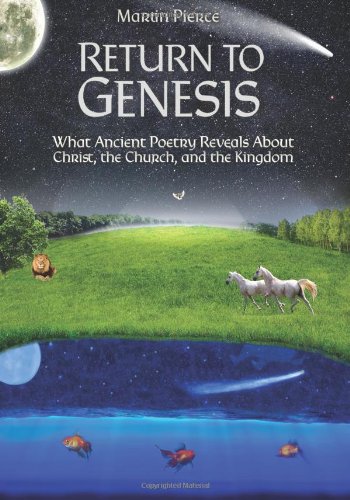
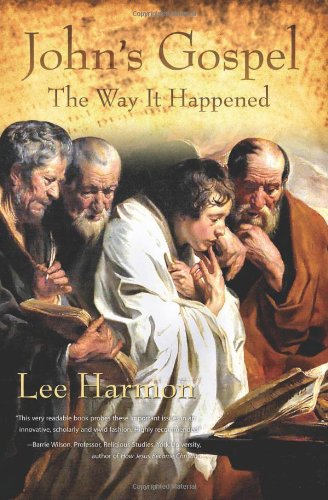
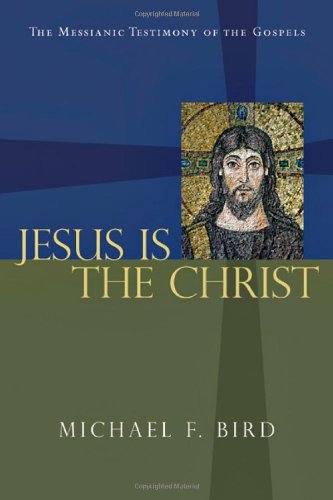

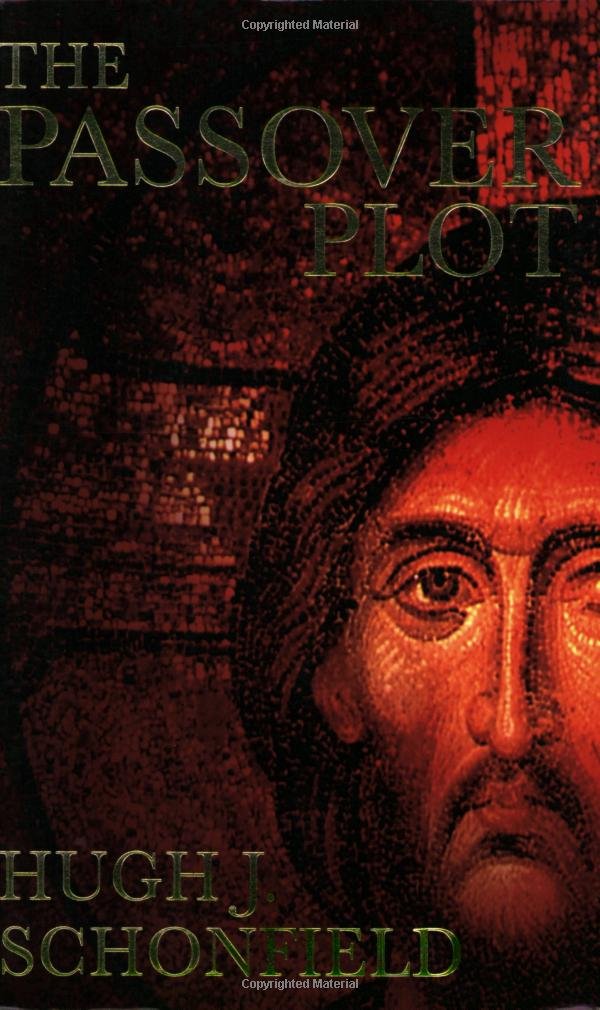
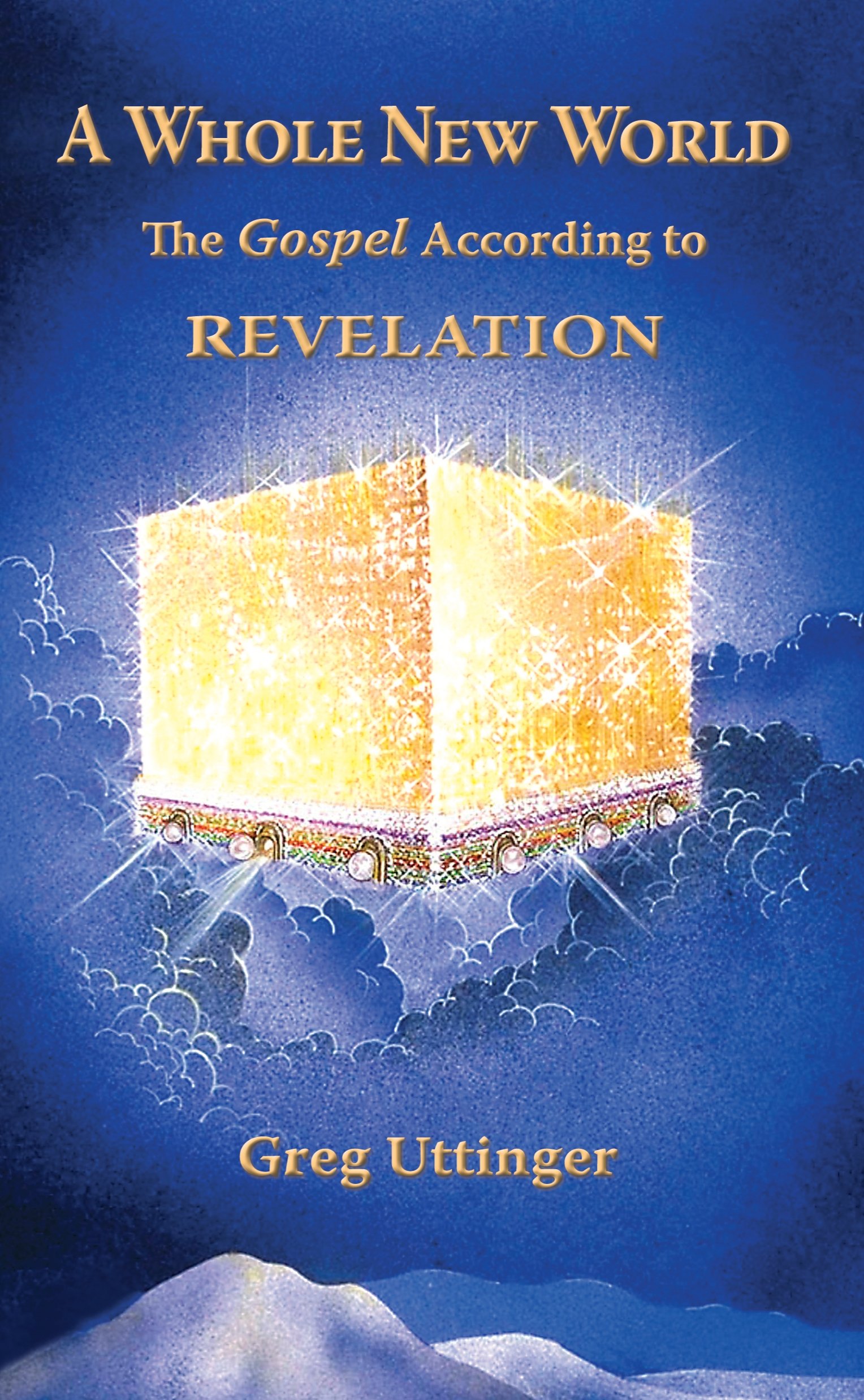
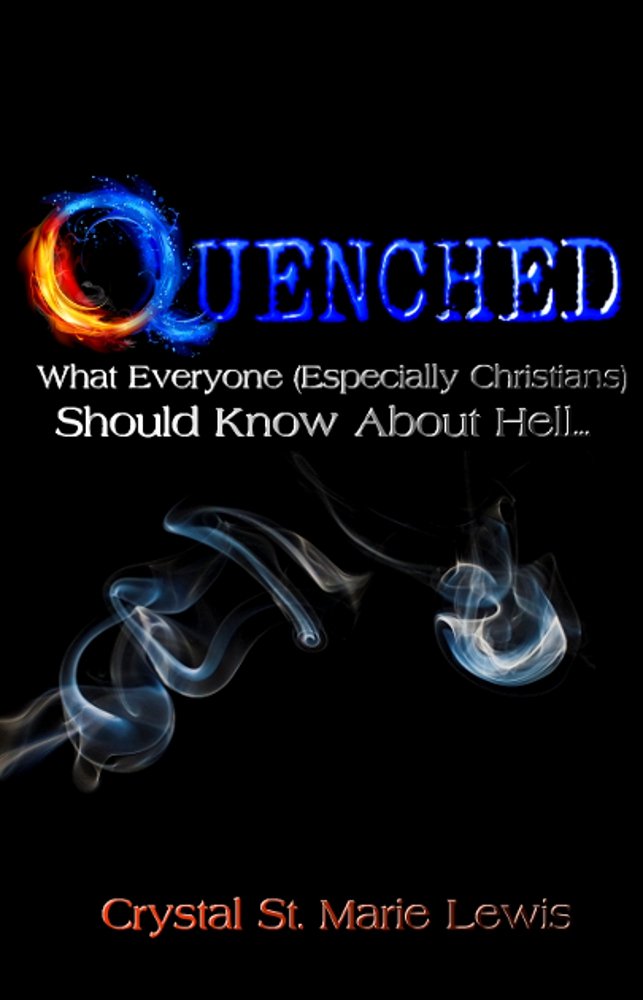


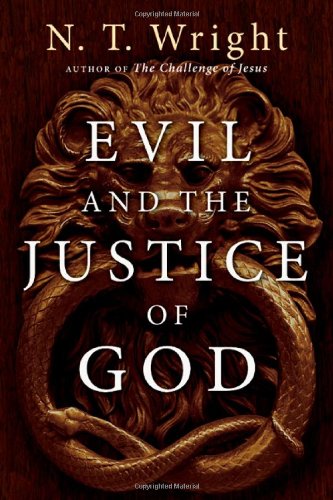
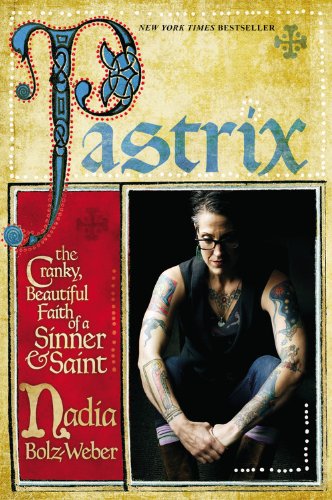


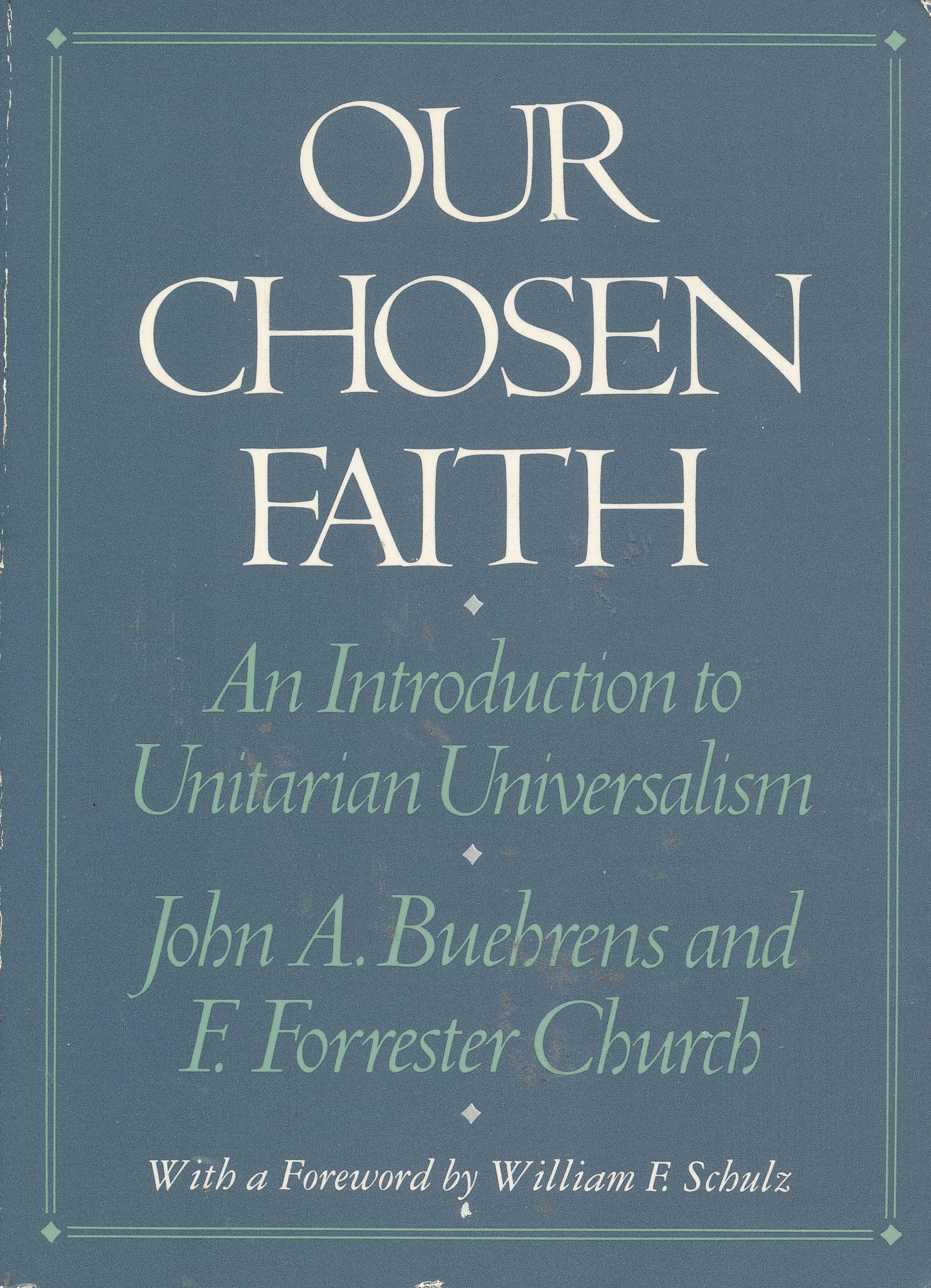

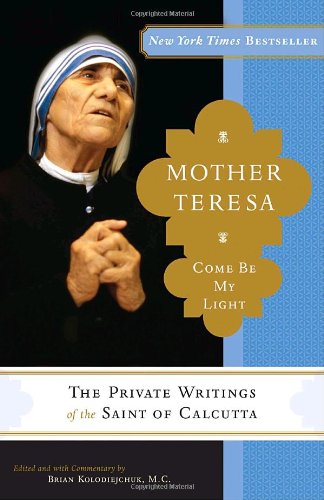












 354 Circles
354 Circles
 603 Goodreads Friends & Fans
603 Goodreads Friends & Fans

 Hello! I'm an author, historical Jesus scholar, book reviewer, and liberal Christian, which means I appreciate and attempt to exercise the humanitarian teachings of Jesus without getting hung up on any particular supernatural or religious beliefs.
The Bible is a magnificent book that has inspired and spiritually fed generations for thousands of years, and each new century seems to bring a deeper understanding of life’s purpose. This is true of not only Christianity; through the years, our age-old religions are slowly transforming from superstitious rituals into humanitarian philosophies. In short, we are growing up, and I am thrilled to be riding the wave.
I avidly read all thought-provoking religion titles. New authors: I'd love to read and review your book!
Hello! I'm an author, historical Jesus scholar, book reviewer, and liberal Christian, which means I appreciate and attempt to exercise the humanitarian teachings of Jesus without getting hung up on any particular supernatural or religious beliefs.
The Bible is a magnificent book that has inspired and spiritually fed generations for thousands of years, and each new century seems to bring a deeper understanding of life’s purpose. This is true of not only Christianity; through the years, our age-old religions are slowly transforming from superstitious rituals into humanitarian philosophies. In short, we are growing up, and I am thrilled to be riding the wave.
I avidly read all thought-provoking religion titles. New authors: I'd love to read and review your book!
 Hi! While Lee writes the articles and reviews the books, I edit, organize, and maintain the blog. The views expressed here are Lee's but I'm his biggest supporter! :-)
Hi! While Lee writes the articles and reviews the books, I edit, organize, and maintain the blog. The views expressed here are Lee's but I'm his biggest supporter! :-)
Connect With Me!